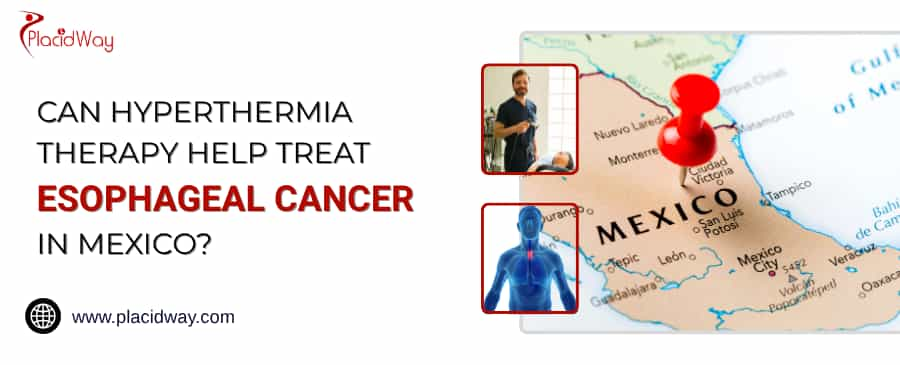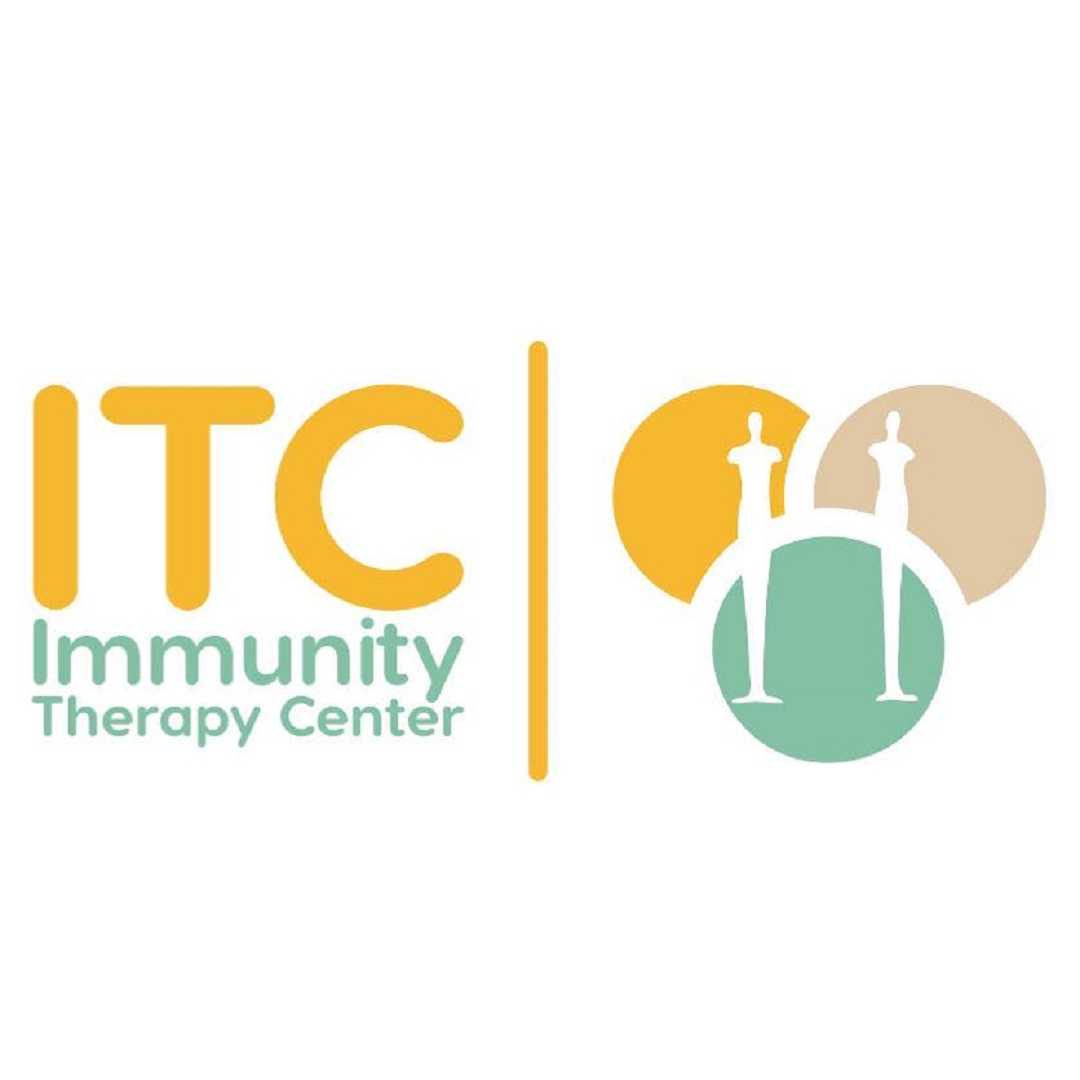Evaluating Hyperthermia Therapy for Esophageal Cancer in Mexico

"Yes, hyperthermia therapy is available in Mexico, often as part of integrative treatment plans for esophageal cancer, and can enhance the effectiveness of conventional therapies like chemotherapy and radiation."
Esophageal cancer is a serious condition where malignant cells form in the tissues of the esophagus, the tube that connects the throat to the stomach. While conventional treatments like surgery, chemotherapy, and radiation therapy are standard, many patients explore complementary and alternative approaches to improve outcomes and manage side effects. Among these, hyperthermia therapy is gaining attention. This blog post will delve into how hyperthermia therapy works, its role in treating esophageal cancer in Mexico, what to expect, and answer frequently asked questions about this innovative treatment.
What is Hyperthermia Therapy?
"Hyperthermia therapy is a cancer treatment that involves heating body tissue to temperatures higher than normal (typically 104°F to 111°F or 40°C to 45°C) to damage and kill cancer cells, often with minimal harm to healthy tissue."
Hyperthermia, also known as thermal therapy or thermotherapy, works on the principle that cancer cells are more sensitive to heat than normal cells. When exposed to elevated temperatures, cancer cells can become weakened, making them more vulnerable to other treatments. The heat can also improve blood flow to the tumor, potentially enhancing the delivery of chemotherapy drugs and increasing the effectiveness of radiation therapy. This makes hyperthermia a valuable adjunct to conventional cancer treatments.
How Does Hyperthermia Therapy Work for Esophageal Cancer?
"Hyperthermia therapy for esophageal cancer works by directly heating the tumor, which can damage cancer cells and make them more susceptible to the effects of chemotherapy and radiation therapy."
In the context of esophageal cancer, hyperthermia can be applied locally or regionally. Local hyperthermia focuses heat directly on the tumor, often using devices that generate microwaves, radiofrequency, or ultrasound waves. These devices can be placed externally, or probes can be inserted directly into or near the tumor. Regional hyperthermia heats a larger area, such as a body cavity or organ, and can involve techniques like deep tissue heating or regional perfusion. The goal is to raise the temperature of the tumor cells to a point where they are damaged, either directly by the heat or indirectly by becoming more responsive to other therapies.
Is Hyperthermia Therapy Widely Available for Esophageal Cancer?
"While not as widely available as conventional treatments, hyperthermia therapy is offered at specialized cancer centers, including some in Mexico, often as part of an integrative treatment plan for esophageal cancer."
Hyperthermia therapy requires specialized equipment and expertise, meaning it is not available at every cancer treatment facility. However, a growing number of clinics, particularly those focusing on integrative and alternative cancer treatments, have incorporated hyperthermia into their protocols. Mexico has emerged as a destination for patients seeking these types of advanced and sometimes less conventional therapies, offering various options for esophageal cancer patients.
What Types of Hyperthermia are Used for Esophageal Cancer?
"For esophageal cancer, local and intraluminal/endocavitary hyperthermia are commonly used, with probes or devices delivering heat directly to the tumor or within the esophageal cavity."
-
Local Hyperthermia: This method targets a small area, such as the esophageal tumor itself. Techniques involve:
-
External Hyperthermia: Devices placed on the skin near the tumor.
-
Intraluminal or Endocavitary Hyperthermia: Probes that generate heat are inserted into the esophagus, directly within or near the tumor. This is particularly relevant for esophageal cancer due to the tumor's location within a body cavity.
-
Interstitial Hyperthermia: Needles or probes are inserted directly into the tumor, allowing for higher temperatures. Radiofrequency ablation (RFA) is a type of interstitial hyperthermia that uses radio waves to heat and destroy cancer cells. While often used for liver, kidney, and lung tumors, its application for esophageal cancer depends on the tumor's size and location.
-
-
Regional Hyperthermia: This involves heating a larger region of the body that contains the tumor. While less common for primary esophageal cancer specifically, it may be considered if the cancer has spread regionally.
What are the Benefits of Combining Hyperthermia with Other Treatments for Esophageal Cancer?
"Combining hyperthermia with treatments like chemotherapy and radiation therapy for esophageal cancer can enhance their effectiveness by making cancer cells more sensitive to these therapies and improving drug delivery."
Numerous studies and clinical trials have shown that hyperthermia can act as a sensitizer, meaning it makes cancer cells more vulnerable to the effects of chemotherapy and radiation.
-
Enhanced Chemotherapy: Heat can increase blood flow to the tumor, leading to a higher concentration of chemotherapy drugs within the cancer cells. It can also make cell membranes more permeable, allowing drugs to enter the cells more easily and increase their cytotoxic effects.
-
Enhanced Radiation Therapy: Hypoxic (low-oxygen) cancer cells are often resistant to radiation. Hyperthermia can improve oxygenation within the tumor and inhibit the repair of DNA damage caused by radiation, thereby increasing the effectiveness of radiation therapy.
-
Improved Immune Response: Some research suggests that hyperthermia may stimulate the immune system to better recognize and fight cancer cells by causing them to release certain antigens.
What are the Potential Side Effects of Hyperthermia Therapy for Esophageal Cancer?
"The side effects of hyperthermia therapy for esophageal cancer are generally mild and temporary, often including discomfort or pain at the treatment site, and may involve skin irritation or burns in rare cases."
The side effects usually depend on the type of hyperthermia, the area being treated, and the temperature reached.
-
Local and Regional Hyperthermia: Potential side effects include discomfort, pain, or burns in the treated area. Swelling and blistering can also occur. When applied to the esophagus, patients might experience temporary swallowing difficulties or irritation.
-
Whole-Body Hyperthermia: While not typically used for localized esophageal cancer, if applied, it can lead to more systemic effects like nausea, vomiting, diarrhea, and fatigue, similar to a fever response. Most side effects are temporary and resolve shortly after treatment. Skilled practitioners carefully monitor the temperature to minimize adverse effects.
How Long Does a Hyperthermia Treatment Session Last for Esophageal Cancer?
"A typical hyperthermia treatment session for esophageal cancer can last between 30 minutes to 2 hours, depending on the specific technique used and the treatment plan."
The duration of each session is carefully determined by the medical team based on the type of hyperthermia, the size and location of the tumor, and the patient's tolerance. Multiple sessions are often required as part of a complete treatment course, usually administered several times a week for several weeks, often in conjunction with chemotherapy or radiation therapy.
What is the Cost of Hyperthermia Therapy for Esophageal Cancer in Mexico?
"The cost of hyperthermia therapy for esophageal cancer in Mexico can range from $5,000 to $15,000 per cycle, or around $1,000 to $3,000 per session, with personalized treatment plans potentially costing more."
Costs can vary significantly depending on the clinic, the type of hyperthermia offered (local vs. whole-body), the number of sessions required, and whether it's part of a comprehensive package that includes other therapies. Mexico is known for offering alternative and integrative cancer treatments at a potentially lower cost than in countries like the United States, making it an attractive option for medical tourism. Patients should inquire about detailed cost breakdowns and what is included in any treatment package.
Are Mexican Clinics Credible for Hyperthermia Therapy for Esophageal Cancer?
"Many clinics in Mexico offering hyperthermia therapy for esophageal cancer are reputable, especially those with international accreditations, experienced medical teams, and transparent patient testimonials, but thorough research is essential."
Mexico has a growing number of advanced medical facilities, particularly in cities like Tijuana and Cancun, that cater to international patients seeking a range of treatments, including alternative cancer therapies. When considering treatment in Mexico, it is crucial to research clinics thoroughly, looking for:
-
Accreditation: Check for international accreditations or affiliations with recognized medical bodies.
-
Doctor Credentials: Verify the qualifications and experience of the medical team, especially oncologists specializing in esophageal cancer and hyperthermia.
-
Patient Reviews and Testimonials: Look for authentic feedback from previous patients.
-
Transparency: Ensure the clinic provides clear information about treatment protocols, costs, and potential outcomes.
What Should I Expect During a Hyperthermia Consultation in Mexico for Esophageal Cancer?
"During a hyperthermia consultation for esophageal cancer in Mexico, you can expect a comprehensive review of your medical history, diagnostic imaging, and a discussion of a personalized treatment plan, including how hyperthermia may integrate with other therapies."
The consultation typically involves:
-
Medical History Review: The medical team will review your complete medical records, including previous diagnoses, treatments, and current health status related to esophageal cancer.
-
Diagnostic Imaging and Tests: They may request recent scans (CT, MRI, PET), biopsies, and blood tests to get a complete picture of your condition.
-
Physical Examination: A thorough physical examination will be performed.
-
Treatment Plan Discussion: The specialists will discuss whether hyperthermia is suitable for your specific case of esophageal cancer, how it will be administered, its potential benefits, and any associated risks or side effects. They will also explain how hyperthermia will be integrated with other treatments like chemotherapy or radiation.
-
Cost and Logistics: Details regarding the cost of treatment, duration of stay, and other logistical considerations will also be covered.
Can Hyperthermia Therapy Cure Esophageal Cancer?
"Hyperthermia therapy is generally not considered a standalone cure for esophageal cancer but rather a powerful adjunct that enhances the effectiveness of other cancer treatments, potentially leading to better outcomes."
While hyperthermia can directly damage and kill cancer cells, its primary role in oncology is often as a sensitizer, making conventional therapies more effective. It can help shrink tumors, improve local control of the disease, and potentially increase survival rates when used in combination with radiation and/or chemotherapy. For esophageal cancer, a multidisciplinary approach involving surgery, chemotherapy, radiation, and potentially hyperthermia, offers the best chance for successful management.
How Does Hyperthermia Affect the Immune System in Esophageal Cancer Patients?
"Hyperthermia therapy may positively influence the immune system in esophageal cancer patients by inducing heat shock proteins, releasing tumor antigens, and enhancing the activity of immune cells."
Heat can trigger a stress response in cancer cells, leading to the expression of heat shock proteins (HSPs) on their surface. These HSPs can act as "danger signals" that alert the immune system to the presence of abnormal cells. Additionally, the destruction of cancer cells by heat can release tumor-associated antigens, which the immune system can then recognize and mount a more robust anti-tumor response against. This immunomodulatory effect of hyperthermia is an active area of research and contributes to its potential benefits in integrative cancer treatment.
Is Hyperthermia Therapy an "Alternative" Treatment for Esophageal Cancer?
"Hyperthermia therapy is often considered a complementary or integrative treatment for esophageal cancer, as it is typically used in conjunction with conventional therapies rather than as a sole alternative."
While some clinics in Mexico and elsewhere may present hyperthermia as part of "alternative" cancer treatment packages, it is more accurately described as an integrative approach. Its efficacy is largely demonstrated when used in combination with established treatments like chemotherapy and radiation. The goal is to maximize the impact of these conventional therapies while potentially minimizing their side effects or improving overall patient response.
What Are the Long-Term Outcomes of Hyperthermia Therapy for Esophageal Cancer?
"Long-term outcomes of hyperthermia therapy for esophageal cancer are promising when combined with conventional treatments, with studies indicating improved local control and potential enhancements in survival rates, although results can vary based on individual factors."
While hyperthermia has been studied for decades, rigorous large-scale, long-term studies specifically for esophageal cancer are still ongoing or limited. However, existing research suggests that its combination with radiation and chemotherapy can lead to significant reductions in tumor size and improved local disease control. The overall prognosis for esophageal cancer depends on many factors, including the stage of cancer at diagnosis, the patient's overall health, and the specific treatment protocol followed. Hyperthermia offers a valuable tool to potentially improve these outcomes.
What Are the Innovations in Hyperthermia Technology for Esophageal Cancer?
"Innovations in hyperthermia technology for esophageal cancer focus on more precise and controlled heat delivery, including advanced imaging guidance, nanoparticle-mediated heating, and personalized treatment planning."
Ongoing research and technological advancements are making hyperthermia increasingly sophisticated:
-
Improved Delivery Systems: New probes and external applicators are being developed for more targeted and efficient heating of esophageal tumors.
-
Enhanced Monitoring: Advanced temperature monitoring systems, often integrated with imaging techniques like MRI, allow for real-time tracking of heat distribution, ensuring optimal temperatures are reached in the tumor while protecting healthy tissue.
-
Nanotechnology: Researchers are exploring the use of nanoparticles that can be precisely targeted to cancer cells and then heated using external energy sources, offering a highly localized form of hyperthermia. This is a promising area for improving the specificity and effectiveness of the treatment for various cancers, including esophageal cancer.
-
Personalized Treatment Planning: Computational models and imaging data are being used to create patient-specific heating plans, optimizing the energy delivery for individual tumor characteristics.
For those considering advanced and integrative approaches for esophageal cancer treatment, PlacidWay offers comprehensive information and access to leading clinics worldwide, including those in Mexico that provide hyperthermia therapy and other innovative healthcare solutions. Explore PlacidWay to discover options tailored to your needs.


.png)














Share this listing